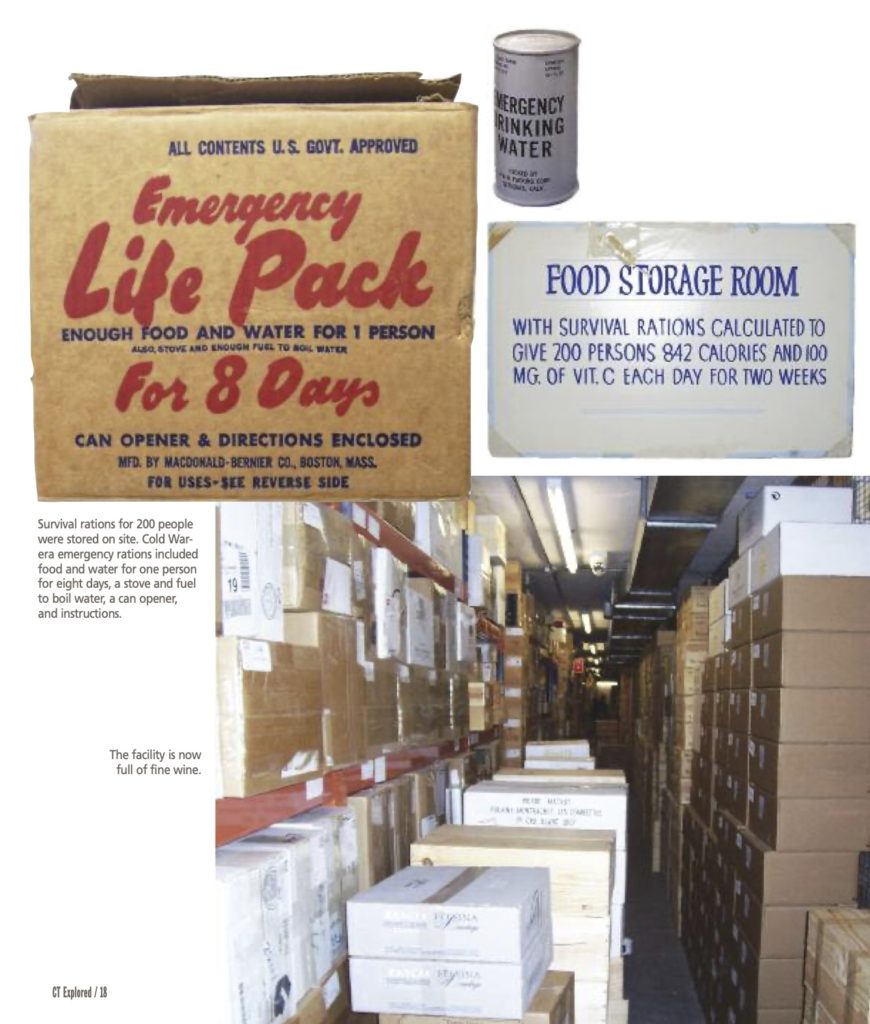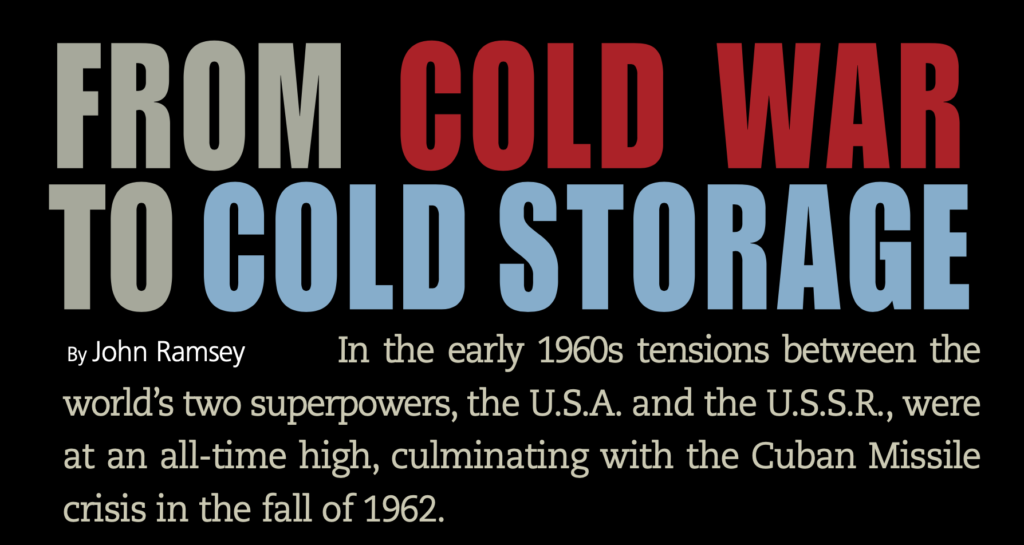(c) Connecticut Explored Inc. Summer 2014
Subscribe/Buy the Issue!
In the early 1960s tensions between the world’s two superpowers, the U.S.A. and the U.S.S.R., were at an all-time high, culminating with the Cuban Missile crisis in the fall of 1962. American industry responded to these tensions in numerous ways. In Hartford, Connecticut, the “Insurance City,” fear of nuclear war prompted area insurance companies and banks to form an enterprise known as the Underground Record Protection Cooperative Trust. The trust comprised companies from Hartford, East Hartford, New London, and Meriden.
In that pre-computer era, paper records and microfilm were the stock and trade of financial institutions, and protecting such records from damage and destruction was vital to these businesses’ survival. The proximity of Pratt & Whitney and other defense contractors ensured that Hartford was on Russia’s target list. In order to survive a nuclear attack on Hartford, a location for storing records at least 20 miles from the city was needed. Even at that distance, a nuclear-hardened structure was required.

top: Survival rations for 200 people were stored on site. Cold War- era emergency rations included food and water for one person for eight days, a stove and fuel to boil water, a can opener, and instructions. below: The facility is now full of fine wine. photo: John Ramsey
After conducting a search, on November 29, 1961, the trust purchased a 210-acre parcel of farmland from Armand Ricard for $30,000, according to the deed on file in the Stafford town hall. Both distance from Hartford and a natural mountain range to the site’s southwest would help protect a storage facility there .
The Jarvis Construction Company of Manchester, under the direction of the Onderdonk and Lathrup engineering firm of Glastonbury, started construction of an underground vault following specifications provided by the United States Atomic Energy Commission (AEC). A large hole was excavated in the side of the hill on the east end of the property and a 10,000 square foot concrete vault was built. It was then covered by 15 feet of soil. The vault had 2-foot-thick reinforced poured concrete walls and a nine-ton blast door and included an air filtration system that would protect it from post-attack fallout. Other features included a diesel generator to provide backup power, redundant heating and cooling systems, and 20 phone lines with an antenna for emergency communications on the roof. Reportedly, the original alarm system was wired directly to the nearby state police barracks.
The specifications called for the vault’s surviving anything but a direct hit by a nuclear bomb, thus nearly guaranteeing the survival of the business and financial records housed inside. As a bonus, the records were also safe from hurricanes, tornadoes, fire, theft, and vandalism.

The Cold War-era Underground Record Protection Cooperative Trust’s blast-hardened air intake looks like an ordinary shed from a distance. photo: John Ramsey
The facility, built at a cost of $330,000, opened in 1962. More than 200 Hartford-area banks and insurance companies each had their own locked wire mesh enclosed storage area within the 100-foot-by-100-foot space. A caretaker lived in a farmhouse on the property and was the only regular employee. He performed routine maintenance and opened the facility when new records arrived. Several large barn-like outbuildings were constructed to serve as crisis relocation centers where post-disaster operations could be conducted. Arrangements were reportedly in place for the Connecticut and Massachusetts state police to use the bunker as a post in the event of an emergency.
The advent of digital storage and satellite and digital communications made the facility obsolete by the late 1980s. In the early 1990s, the property was put up for sale and was purchased by a private individual. The underground vault sat vacant for close to a decade.
In 2000, the vault was converted to a commercial wine-storage facility. The constant temperature and humidity, the darkness, and the lack of vibration were ideal for wine storage, and the vault’s security made it attractive to people looking to store their valuable collections of wine. The current owners, Jed and Amie Benedict of Horse Ridge Cellars, generously provided me with a tour in mid-2010. These images are from that visit.
John Ramsey is webmaster of coldwar-ct.com and coldwar-ma.com. He is also president of the Torrington Community Radio Foundation, licensee of WAPJ-FM, and owner of Ramsey Communications Services, a broadcast engineering consulting firm.
Explore!
Read more about Connecticut history lurking underground in our Summer 2014 issue
“Civil Defense in the Cold War,” 2003 Nov/Dec/Jan 2004
“Quonset Huts & Nike Missile Bases: Connecticut Hidden History in Plain Site,” Spring 2013

